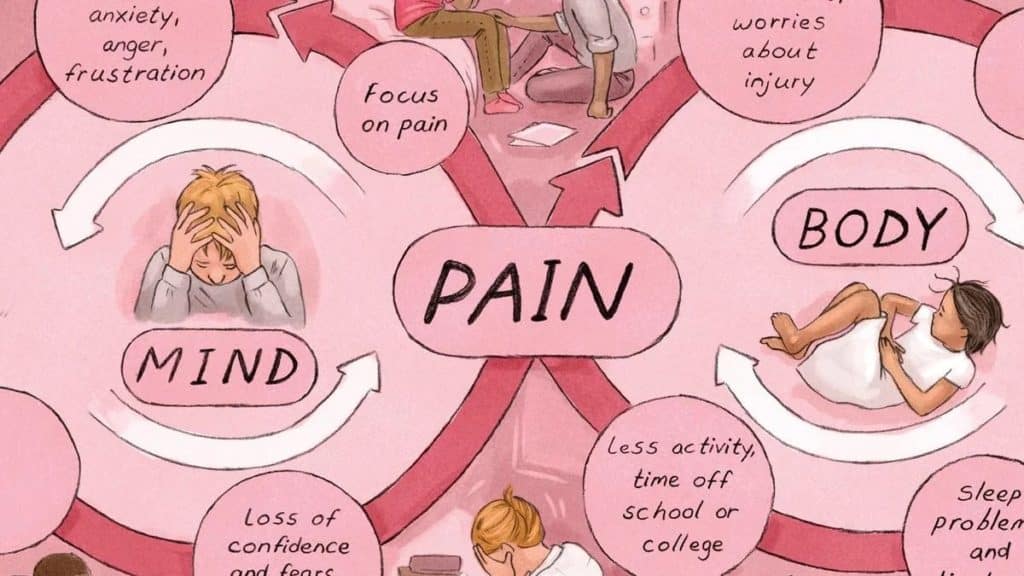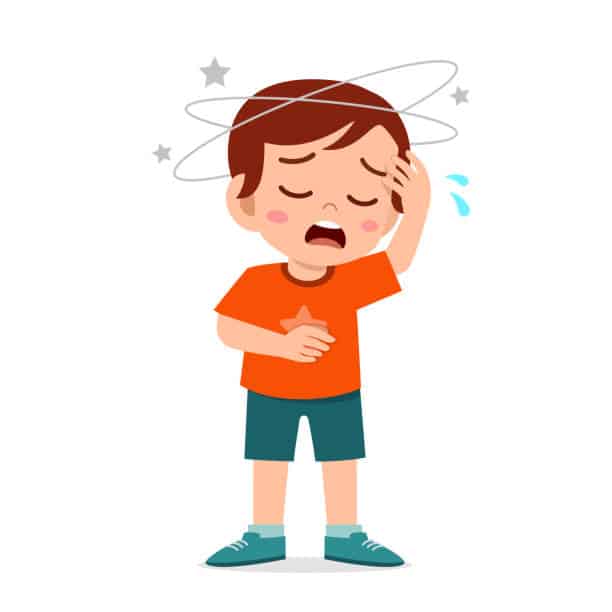When I was twenty-two years old, I wanted two things: 1. To be understood. 2. For people to think I was good at my job....Read more
The capability to tolerate pain can vary amongst individuals, irrespective of age. It is not unusual that children might also tolerate pain higher than adults because of factors including their growing fearful systems and psychological coping mechanisms.
This isn’t the case, as pain perception and tolerance can be inspired by various factors, including personal differences, beyond studies, and the kind of ache skilled.

Research shows that kids may have a higher pain threshold during a few instances. However, it’s vital to consider that pain perception is subjective and may vary from individual to person.
Signs Of Pain In Toddlers?
Signs of aches in babies might also include:
- Crying or increased fussiness.
- Clenching fists or tensing muscle tissue.
- Facial expressions of distress, together with furrowing brows or grimacing.
- Changes in consuming or slumbering styles.
- Restlessness or agitation.
- Irritability or accelerated sensitivity to the touch.
- Decreased pastime or reluctance to move.
- Vocalizations like whining or moaning.
- Rubbing or protecting the affected vicinity.
- Seeking consolation and wanting to be held more fantastic than usual.
- Pain assessment in children involves a comprehensive evaluation to determine
- the presence and intensity of pain.
Several methods are used depending on the child’s age and communication ability. Common approaches include:
- Self-Report Scales. Used for older children who can express their pain level using numerical scales (e.g., Wong-Baker FACES scale, numeric rating scale).
- Visual Analog Scale (VAS). Suitable for children who can mark their pain intensity on a line between two endpoints.
- Behavioural Observation. Used for infants and young children who can’t verbalize their pain. Observing facial expressions, body movements, and vocalizations can provide clues.
- Pain Behavior Checklist. Systematic observation of specific pain-related behaviours.
- FLACC Scale. Designed for non-verbal children, assessing Facial expression, Leg movement, Activity level, Cry, and Controllability.
- Oucher Scale. A pictorial scale with images reflecting different pain levels suitable for children who have difficulty with numerical scales.
- Faces Pain Scale-Revised (FPS-R). A series of faces representing varying degrees of pain intensity. The choice of assessment method depends on the child’s age, developmental level, and communication abilities, aiming to get an accurate understanding of their pain experience.
Pain assessment in children?
Pain evaluation in kids entails a complete review to decide the presence and intensity of aches. Several strategies rely on the child’s age and potential to speak. Common procedures include:
- Self-Report Scales. Used for older kids who can explicitly their pain level using numerical scales (e.g., Wong-Baker FACES scale, numeric score scale).
- Visual Analog Scale (VAS). Suitable for children who can mark their pain depth on a line between endpoints.
- Behavioral Observation. Used for toddlers and younger kids who can’t verbalize their aches. Observing facial expressions, body movements, and vocalizations can offer clues.
- Pain Behavior Checklist. Systematic observation of particular ache-related behaviors.
- FLACC Scale. Designed for non-verbal kids, assessing Facial expression, Leg movement, Activity stage, Cry, and Controllability.
- Oucher Scale. A pictorial scale with photographs reflecting specific pain levels suitable for youngsters who’ve difficulty with numerical scales.
- Faces Pain Scale-Revised (FPS-R). A series of faces representing varying levels of ache intensity.
The choice of evaluation technique relies upon the kid’s age, developmental level, and verbal exchange capabilities, aiming to get the correct expertise of their pain.
Are adults more sensitive to pain?
The sensitivity to aches can range among adults, and there’s no blanket declaration that everyone is more sensitive to aches. Pain sensitivity may be promoted via individual variations, genetics, beyond reviews, and numerous other factors.
Research indicates that certain factors may make adults more sensitive to pain in a few instances. For instance, continual fitness conditions, accidents, or underlying medical problems can heighten pain sensitivity. Mental elements, which include anxiety, stress,
and despair can also affect how adults perceive and experience pain.
Conversely, with age, a few adults may additionally enjoy a decline in ache sensitivity due to adjustments within the worried gadget and a reduced quantity of pain receptors. So, this isn’t always genuine for all and sundry, as people age otherwise and feature various responses to pain.
It’s crucial to apprehend that ache sensitivity is subjective and may vary appreciably from person to person, whether they are adults or children. Effective ache control involves know-how of individual differences and tailoring remedies hence.
If someone is experiencing persistent or intense pain, it’s miles pleasant to talk with a healthcare expert for proper evaluation and management.
Does age affect pain tolerance?
Yes, age can affect pain tolerance. Pain tolerance refers to a man or woman’s capability to resist or bear aches without experiencing tremendous distress. Several factors, inclusive of age, can impact ache tolerance.
In well known research suggests that pain tolerance tends to boom with age. As people age, they may broaden better coping mechanisms and emotional regulation talents, which can
assist them in taking care of pain more efficaciously. Older adults likely have skilled aches at some point, leading to a higher tolerance.
It is important to observe that ache tolerance can nonetheless range dramatically among people of the identical age institution.
Some older adults may additionally have decreased pain tolerance because of various factors, including underlying fitness conditions, continual aches, or age-associated modifications within the apprehensive machine.so, ache belief and tolerance are complex and subjective studies that may be motivated by physical, mental, and social factors.
As a result, it is crucial to approach ache management on a character foundation, thinking of everybody’s unique occasions and wishes. If someone is experiencing giant or continual pain, they should seek advice from a healthcare professional for correct evaluation and remedy.
Are adults more sensitive to pain?
The sensitivity to pain in adults can vary, and there’s no one-length-suits-all solution to whether or not adults are more sensitive to pain. Pain sensitivity is complicated and subjective in that it may be motivated by different factors.
In some cases, adults may also certainly be extra touchy to ache. Certain medical conditions, injuries, or persistent ache conditions can heighten adult pain sensitivity. So, mental elements, along with pressure, anxiety, and despair, can increase the perception of pain.
On the other hand, as adults age, a few individuals can also enjoy a decline in pain sensitivity due to changes inside the frightened machine and a discounted variety of ache receptors. This is not a typical fashion, as pain sensitivity can range substantially among adults of various ages.
So pain perception and tolerance may result from an individual’s past reviews, genetics, cultural heritage, and ordinary fitness repute. Each person’s pain sensitivity is precise and may fluctuate from one person to any other.
It is critical to recognize that pain sensitivity is a noticeably individualized phenomenon, and generalizations about whether adults are extra touchy to ache might not apply universally.
If someone is experiencing substantial or continual pain, it is exceptional to discuss with a healthcare professional for correct assessment and management tailored to their specific needs.
State and explain pain control in child patients?
Pain control in infant sufferers entails a comprehensive and compassionate method to handling aches, ensuring their consolation and nicely-being through scientific procedures, remedies, or infection.
There are numerous methods of ache manipulation that healthcare professionals may also use, depending on the child’s age, condition, and the kind of ache they may be experiencing.
Here are some commonplace pain control techniques:
Medications. Pain-relieving medicinal drugs, consisting of acetaminophen or ibuprofen, can be used for slight to mild aches. For more intense pains, opioids or different analgesics may be prescribed.
So, their use is cautiously monitored because of capability side outcomes and dangers.
- Topical Anesthetics. Creams or patches containing nearby anaesthetics may be applied to the pores and skin to numb the area before processes like injections or IV insertions.
- Distraction Techniques. Age-appropriate distractions, including toys, games, or motion pictures, can divert the child’s interest at some stage in painful procedures, lowering their tension and perception of pain.
- Guided Imagery. Encouraging the kid to assume a pleasant and calming scenario can assist in reducing pain and pressure throughout medical procedures.
- Breathing Techniques. Teaching kids deep breathing sports can sell rest and help them address aches.
- Physical Comfort Measures. Providing a comfortable and soothing environment, using positioning aids, and adjusting the kid’s posture can alleviate aches and discomfort.
- Non-Pharmacological Therapies. Techniques like massage, warmness or bloodless therapy, and acupuncture may be considered complementary pain management techniques.
My child does not react to pain?
If your baby no longer reacts to aches, it’s crucial to seek medical attention immediately.
The absence of a standard ache response may want to indicate a medical circumstance or neurological issue that calls for evaluation by way of a healthcare expert. Some possible reasons for the absence of ache response encompass congenital insensitivity to aches (CIP) or sensory processing disorders.
It’s crucial not to overlook or dismiss this symptom now, as ache serves as a protecting mechanism, alerting us to capability harm or damage. The incapacity to sense aches can lead to unintended injuries or get worse present conditions without the kid being privy to the chance.
Contact a healthcare provider or paediatrician right now to have your baby assessed very well.
They can conduct suitable exams and examinations and refer you to experts to become aware of the underlying purpose of the lack of ache reaction and expand an appropriate remedy plan to ensure your infant’s well-being and safety.
Explaining chronic pain to a child?
Explaining chronic aches to a child requires a sensitive and age-suitable technique. Here’s an in depth explanation that can be used as a manual:
A chronic ache is an ache that lasts for a long time, a lot longer than when we get a bump or a scrape. It’s like having pain or soreness that does not leave effortlessly. Sometimes, our bodies have difficulty recovering or fixing the part that hurts, so the ache continues.

Like when you get chilly or the flu, your frame fights to improve your experience. But with continual pain, the frame’s restoration technique is taking longer, and that’s why you could feel the ache for some time.
Remember, it is now not your fault that you feel this way, and it does not mean you probably did something incorrect. It’s just something your body is experiencing, and we can paint together to help you sense better.
You might be aware that persistent aches can make you experience tired or frustrated, and that’s absolutely normal. It’s ok to feel disappointed or sad about it on occasion. We are here to guide you and assist you in manipulating the ache in the most friendly manner possible.
We’ll be working with docs and specialists to find ways to assist your body experience higher.
This might encompass attempting distinctive treatments, physical activities, or medicines which can make the ache more extraordinary and achievable. It’s essential to let us know how you are feeling, although it’s tough to explain in case you sense fear or worry.
We need to understand what you are going through so we can help you better.
Remember, you are not alone on this, and we are right here to guide you each step of the manner. Together, we will locate approaches to make you as snug and satisfied as feasible, regardless of continual pain.”
Remember to apply easy language and be patient while explaining continual pain to an infant. Please encourage them to ask questions and specify their feelings so they feel heard and supported at some stage in the procedure.
Always involve the child’s dad, mom, or caregivers within the communication and paint collectively as a group to offer pleasant care and assist in the kid’s nicely-being.
Related Article:
Why Would A Child Be Cruel to Animals

When I was twenty-two years old, I wanted two things: 1. To be understood. 2. For people to think I was good at my job. As a first time founder, I remember feeling under-qualified. I felt like an impostor—and it showed. I struggled to communicate my value in a way that my colleagues and potential investors could understand. I realized I needed to clarify my message and use social media as a tool to help me build my personal brand. This would help me look more credible, I thought. So I got to work. I updated my social media profiles, built a personal website, and began sharing my story online. The more content I shared, the more confident I became. And the more confident I became, the more credible I appeared. Now i am writing blogs for madeforkids.co.uk on different topics on kids.
- Latest Posts by Anna Vatuone
-
What Are The Uses Of A Drone
- -
What Are The Uses Of Playhouse
- -
How To Get A Child To Warm Up To You
- All Posts
